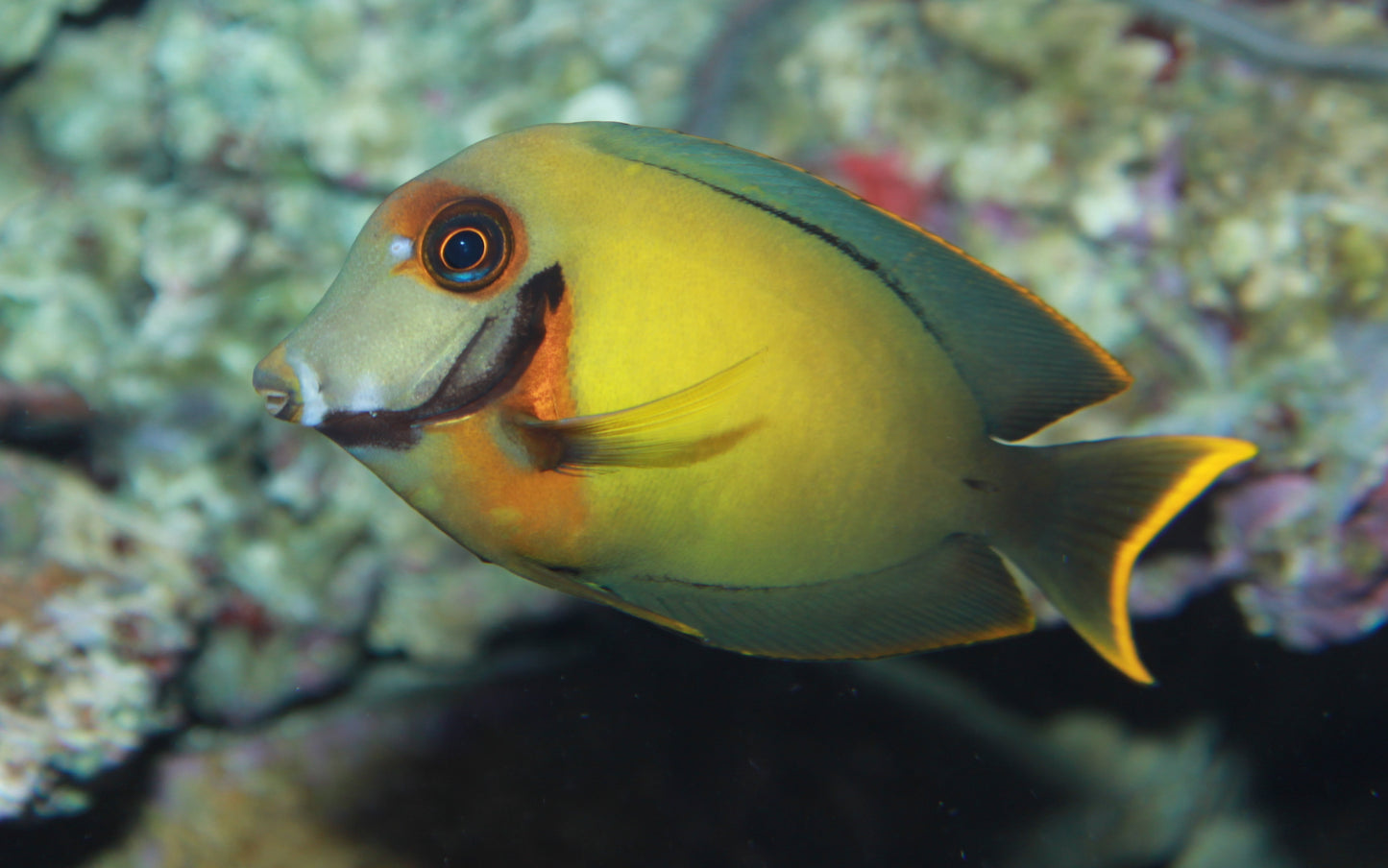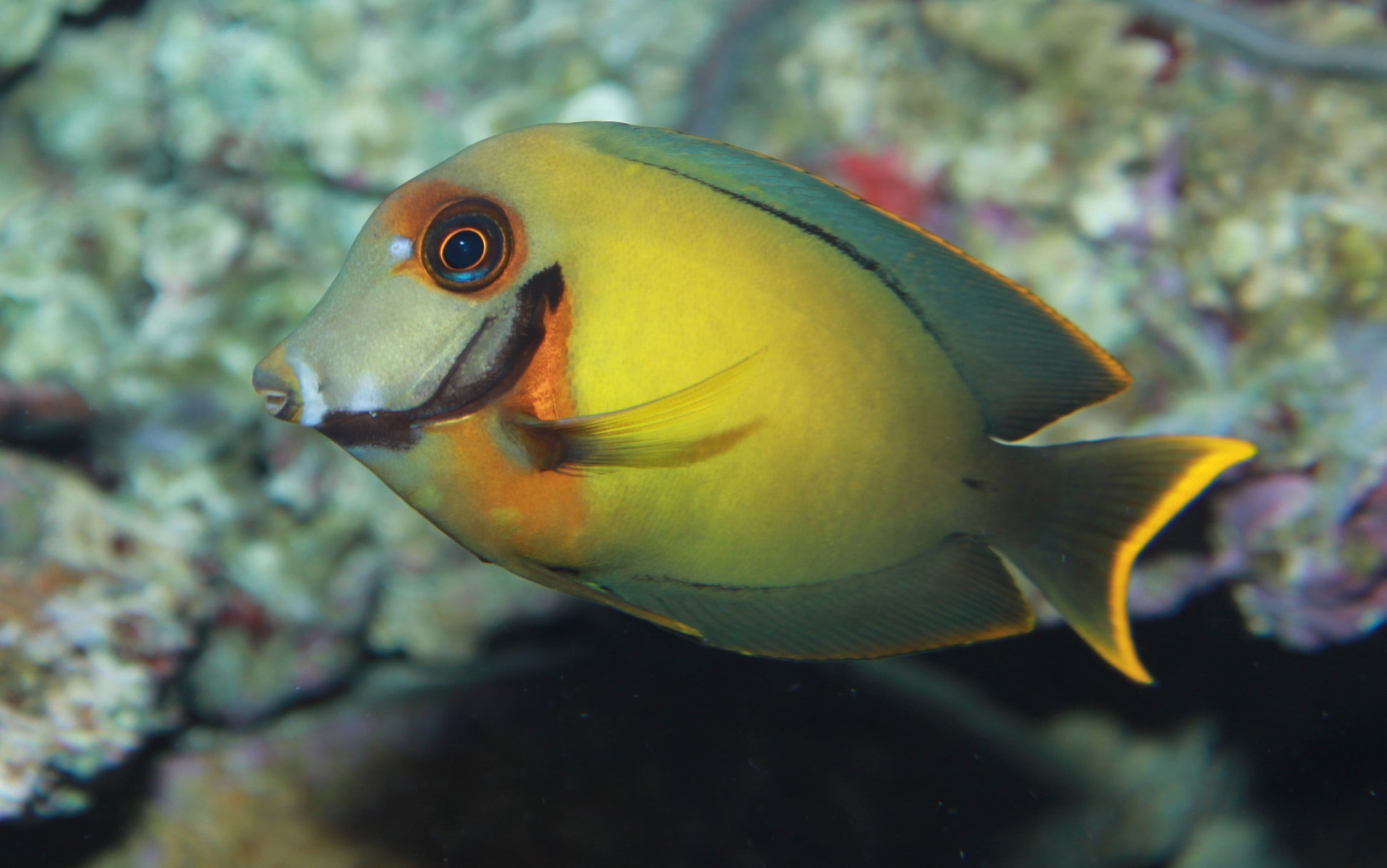Tang Mimic
Tang Mimic
Couldn't load pickup availability
Most often the Chocolate Tang or Mimic Tang is available as a juvenile, and depending upon where it was collected, will look very much like the dwarf angelfish also living in that location. As this tang gets older it changes into its very pretty adult coloration.
The Chocolate Tang or Mimic Tang is a good choice for the home aquarium. They go through an interesting color change from juvenile to adult and are favored because they don't get as large as many others in the same genus. They are moderately easy to care for as long as they are provided with a good environment and their nutritional needs are met.
Like all surgeonfish and tangs, the Chocolate Tang likes lots of water turbulence rather than a placid aquarium. It can be kept in a fish only tank as long as there is plenty of swimming room and plenty of rocks/ corals with nooks and crannies to hide in. It is not too picky about foods once it gets settled, and like most surgeonfish this can be accomplished by initially offering a good macro algae. Gracillaria works well as most tangs can't resist it. Though they can be kept with a variety of tank mates, they will be aggressive towards others of their own kind. They may also fight with other surgeonfish or tangs, especially new additions to their aquarium.
The Chocolate Tang or Mimic Tang are primarily herbivores. In the wild they graze on benthic algae. In the aquarium the majority of their intake will be vegetable matter, but they do need some meaty foods as well. Provide lots of algae, prepared frozen formulas containing algae or spirulina, frozen brine and mysis shrimp, and flake foods. Japanese Nori or other seaweed can be adhered to the aquarium glass with a vegetable clip. An occasional live rock with micro and macro organisms will be greatly appreciated. Culturing macro algae like chaetomorphia in the tank is also a great idea. Feed at least three times a day.
Providing a vitamin supplement (including vitamin C) can help provide for their nutritional needs, and vitamin C can help prevent or reduce Lateral Line Erosion (LLE). This can be done by soaking dried pellets with liquid vitamins, adding vitamins to the food, or adding a liquid vitamin into the water. It is also said that pellets soaked in garlic may help fend off Marine Ich. Some hobbyists also report success with supplemental foods such as previously boiled or frozen zucchini, broccoli, spinach, and leaf lettuce.
Share

